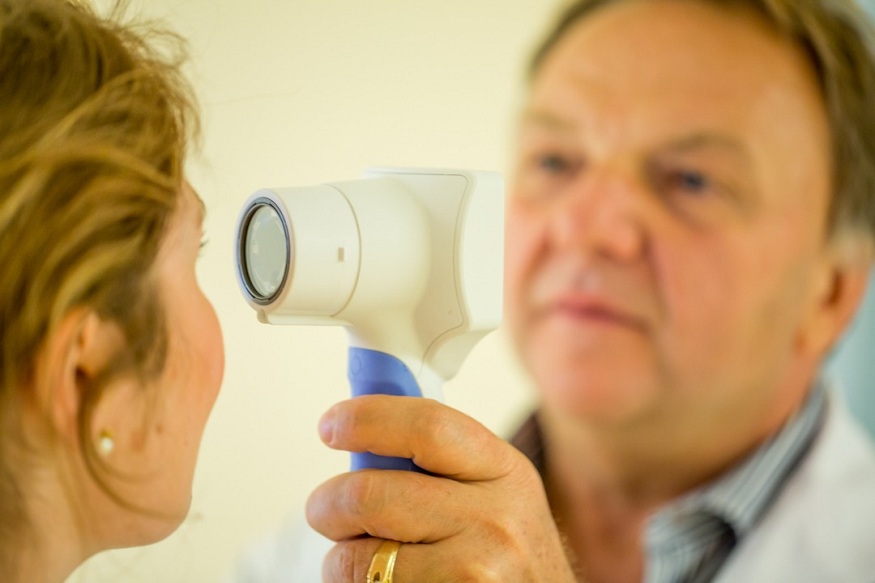Clinical assessments are crucial in providing accurate diagnoses and guiding effective patient treatment plans. In recent years, NeurOptics has developed innovative pupillometry solutions that significantly improve pupillary size measurement accuracy and treatment outcomes.
This post explores these cutting-edge technologies and their potential to transform clinical assessments, particularly neurology.
The Science Behind Pupillometry
The science behind pupillometry is rooted in studying the autonomic nervous system, which regulates pupil size and reactivity. The sympathetic system causes pupil dilation (mydriasis), while the parasympathetic system leads to pupil constriction (miosis). Pupillometry measures these changes to obtain valuable information about a patient’s neurological status.
In a neuro exam, doctors measure pupil size to detect abnormalities in the autonomic nervous system, which may indicate various neurological disorders or brain injuries. Pupil size and reactivity can also serve as early indicators of changes in intracranial pressure, making pupillometry a valuable tool for monitoring patients with traumatic brain injury or other intracranial pathologies.
The ability to provide objective, quantitative data on neurological function sets pupillometry apart from many traditional diagnostic tests, making it a powerful tool in the modern healthcare landscape.
Pupilometry Technology and Its Applications
Pupilometry Technology measures and analyzes pupil movement patterns, offering insights into cognitive and neurological function. This powerful tool has numerous applications in clinical assessments, including evaluating attention, memory, and other cognitive processes. Moreover, pupil measurement can aid in detecting and monitoring the progression of neurodegenerative diseases, traumatic brain injuries, and other neurological disorders.
Limitations of Traditional Diagnostic Tools
Traditional diagnostic tools for assessing neurological function often have limitations, such as being invasive, time-consuming, and relying on subjective interpretation. Pupillometry addresses these limitations by providing objective, non-invasive, and rapid assessments of neurological function.
These advanced neurological tools enable clinicians to make more accurate diagnoses, monitor patient progress, and effectively tailor treatment plans.
The Value of Automated Pupillometry
Automated pupillometry presents several advantages over manual methods for measuring pupillary size and reactivity. By utilizing advanced technology, like an NPi pupillometer, to capture and analyze pupillary data, automated pupillometry eliminates the subjectivity and potential biases inherent in manual assessments. This results in more precise, objective, and reproducible measurements crucial for accurate clinical decision-making.
Additionally, automated pupillometry offers time-saving benefits, allowing clinicians to obtain essential information quickly and efficiently. This translates to a more streamlined clinical workflow and reduced assessment time for patients and healthcare professionals.
Pupilometer as a Non-invasive Assessment Tool
Pupilometry Technology offers a non-invasive means to assess neurological function, providing numerous advantages in clinical settings. Non-invasive assessments minimize patient discomfort, reduce the risk of complications, and promote faster recovery. Additionally, eye-tracking technology can help decrease the reliance on invasive diagnostic procedures, such as lumbar punctures or brain biopsies, which may carry inherent risks.
The Promise of NeurOptics Technology
NeurOptics’ pupillometry solutions offer a range of promising benefits for healthcare professionals and their patients. By providing objective and reliable data, these technologies can improve diagnostic accuracy and support more effective treatment plans. NeurOptics’ solutions can also help reduce the need for invasive diagnostic procedures, minimizing patient discomfort and complications.
Additionally, these tools can increase the efficiency of clinical assessments, ultimately saving time and resources. As NeurOptics’ technologies evolve and improve, healthcare professionals can expect even greater impacts on clinical practice and patient care, making them a valuable investment for medical practices.
The Role of Research in Advancing Non-invasive Assessments
Ongoing research is pivotal in advancing the development and application of non-invasive assessment tools like pupillometry and eye tracking. Recent studies continue to uncover novel applications, refine existing methodologies, and validate the effectiveness of these technologies in clinical settings. As research progresses, we expect to see a significant impact on clinical assessments and improved patient care.
Pupillometry for Enhanced Assessments
Integrating pupillometry and other pupil-tracking technologies can provide a more comprehensive view of a patient’s neurological status. Combining data from both tools creates synergistic opportunities for medical research and clinical practice, resulting in a multidimensional approach to assessing neurological function and pupil measurement. This holistic approach could enhance the accuracy and efficacy of clinical assessments.

